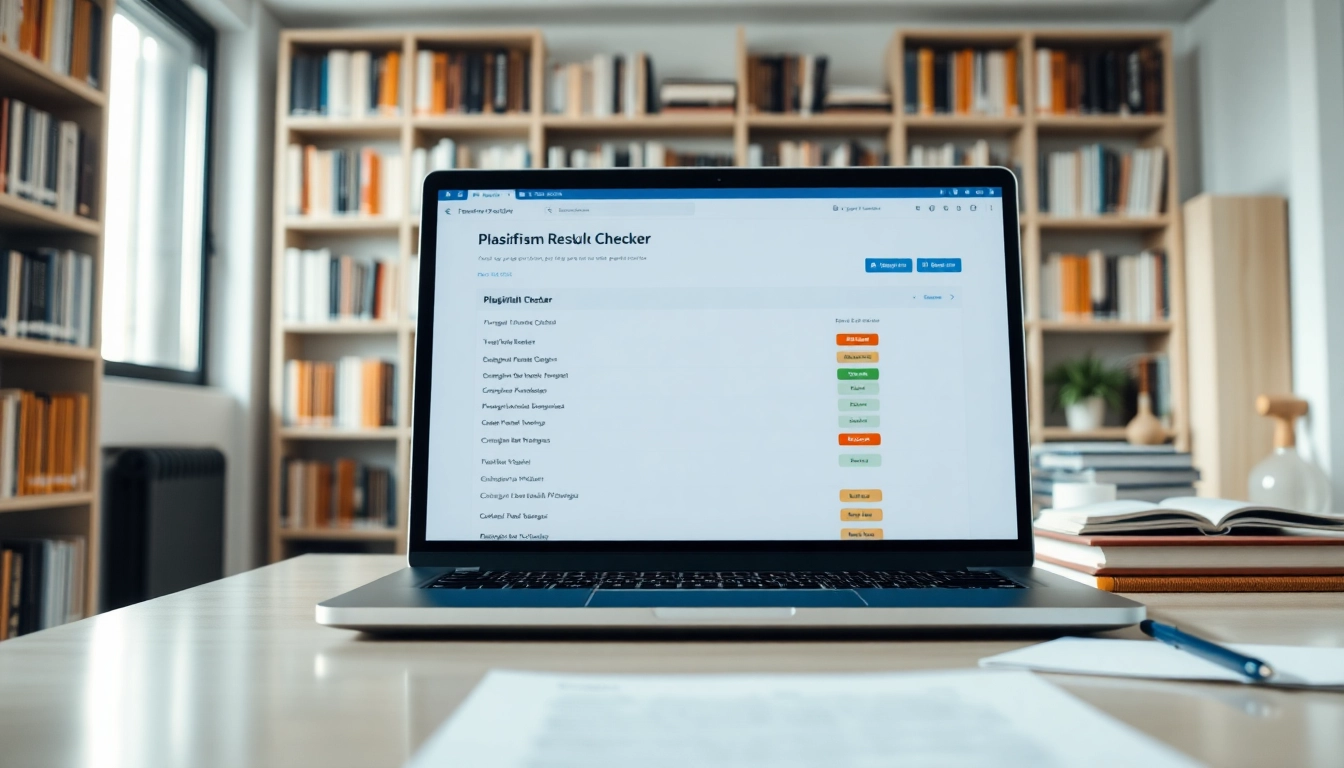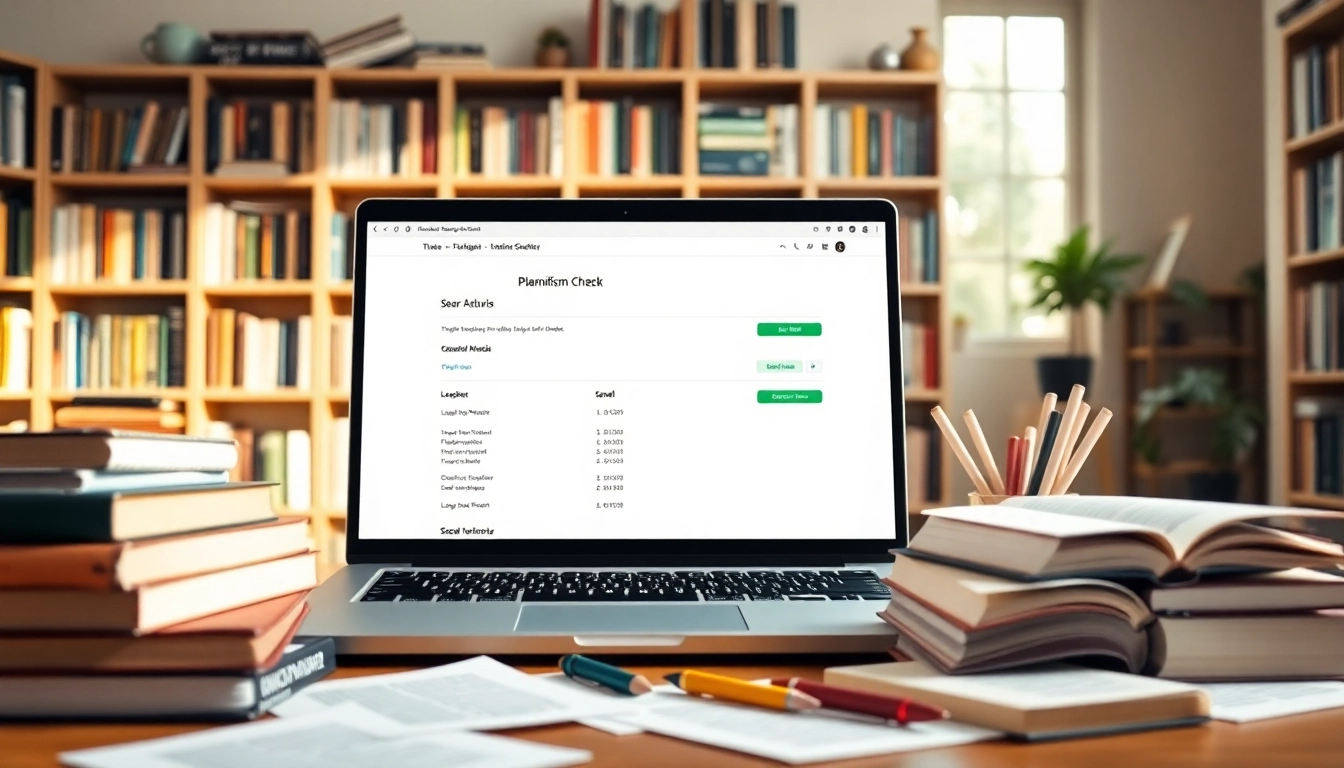
Understanding Plagiarism and Its Consequences
Plagiarism is a serious issue in both educational and professional settings. It undermines the integrity of academic work and can have severe consequences for individuals who engage in it, whether intentionally or unintentionally. To combat this, many resources, including a plagiarism checker, are available to ensure originality and uphold academic standards. In this article, we will explore what plagiarism is, the various types, its importance in academia, and the tools available to detect it.
What is Plagiarism?
Plagiarism is defined as the act of using someone else’s words, ideas, or work without giving appropriate credit. This unethical practice can occur in various forms, affecting students, professionals, and creators alike. It not only violates ethical norms but can also lead to significant academic and legal repercussions.
Different Types of Plagiarism
Plagiarism can manifest in several ways, including:
- Direct Plagiarism: The verbatim copying of text without attribution.
- Self-Plagiarism: Reusing one’s own previously submitted work without acknowledgment.
- Patchwork Plagiarism: Combining various sources into a new document without proper citation.
- Accidental Plagiarism: Unintentionally failing to cite sources correctly, which still has serious consequences.
Why Plagiarism Matters in Academia
Academia places a high value on original thought and integrity. Plagiarism can result in academic penalties, damage to a student’s reputation, and long-term impacts on their educational journey. Moreover, it diminishes the credibility of scholarly work as a whole, thereby undermining the trust in educational institutions and research outputs.
How a Plagiarism Checker Works
Plagiarism checkers are essential tools designed to scan written content for duplicated or closely paraphrased material. They serve various purposes, including checking the originality of academic papers, articles, and other written documents. Understanding how these tools operate can significantly enhance their effectiveness in ensuring content authenticity.
Technical Mechanism Behind the Plagiarism Checker
At the core of a plagiarism checker lies a complex algorithm that analyzes a written document against a vast database of published content. Here’s how it typically works:
- Text Analysis: The software breaks down the submitted text into smaller components, such as sentences or phrases, to facilitate comparison.
- Database Comparison: The tool searches its database, which includes academic papers, articles, and websites, to identify matching phrases or text.
- Similarity Scoring: After comparison, the checker assigns a similarity score indicating the percentage of content that matches existing sources.
Common Features of a Plagiarism Checker
Most plagiarism checkers come equipped with a set of features designed to improve user experience and result accuracy, such as:
- Multilingual Support: Ability to detect plagiarism in various languages.
- File Format Compatibility: Support for different document types, including PDF, DOCX, and TXT.
- Detailed Reporting: Generation of comprehensive reports that highlight sources and percentage match.
- Integration: Compatibility with word processors and online platforms, making it easy to check documents in real-time.
Interpreting Plagiarism Checker Results
Understanding the results generated by a plagiarism checker is crucial for effective remediation. Key elements of the report include:
- Percentage of Similarity: A critical indicator that quantifies how much of the text resembles other sources.
- Highlighted Sections: Direct excerpts from the submitted text alongside the sources that match.
- Source List: A comprehensive list of sources that were identified as containing similar text.
Users should familiarize themselves with interpreting these results to make informed decisions regarding revisions and citations.
Benefits of Using a Plagiarism Checker
Integrating a plagiarism checker into your writing workflow offers numerous benefits, whether you are a student, educator, or professional. These tools not only help maintain academic integrity but also enhance personal writing skills and avoid potential legal issues.
Enhancing Academic Integrity
One of the most significant advantages of using a plagiarism checker is its role in promoting academic integrity. By identifying unintentional plagiarism, these tools help users ensure that they attribute sources correctly, thereby reinforcing ethical writing practices. Maintaining integrity while submitting original work goes a long way in preserving one’s reputation and academic standing.
Improving Writing Skills
Plagiarism checkers can also serve as educational tools. By reviewing highlighted sections and comparing them with original sources, users can better understand how to paraphrase and cite appropriately. This practice not only aids in producing original content but also hones overall writing skills, encouraging creativity and critical analysis.
Avoiding Legal Issues
In professional settings, plagiarizing content can lead to severe legal consequences, including copyright infringement lawsuits. A plagiarism checker acts as a safeguard, detecting potential overlaps with copyrighted material before publication. By proactively addressing these concerns, individuals and organizations can avoid costly legal ramifications and maintain their reputations.
Choosing the Right Plagiarism Checker
With a variety of plagiarism checkers available, selecting the right one can be challenging. Key factors need consideration to ensure the tool meets your specific needs and circumstances.
Key Features to Consider
When evaluating plagiarism checkers, consider the following features:
- Accuracy: Look for tools that have proven track records in recognizing a wide array of sources and types of plagiarism.
- User Interface: A simple, intuitive interface can enhance usability, particularly for first-time users.
- Customer Support: Check if the service offers ongoing support for troubleshooting or inquiries.
- Scalability: Depending on your needs, choose a checker that can handle different document sizes and formats.
Comparing Free vs. Paid Plagiarism Checkers
While there are both free and paid plagiarism checkers available, understanding the differences can help you make an informed decision:
- Free Checkers: These tools can be useful for quick checks but may lack comprehensive databases and advanced features, resulting in less accurate results.
- Paid Checkers: Typically offer larger databases, more nuanced algorithms, and detailed reporting features, providing a clearer picture of potential plagiarism issues.
Consider your needs, the type of work you’re doing, and your budget when selecting between free and paid options.
Best Practices for Using a Plagiarism Checker
To maximize the effectiveness of a plagiarism checker, follow these best practices:
- Use Regularly: Incorporate plagiarism checks as part of your writing process, not just when you’ve finished a piece.
- Review Reports Thoroughly: Do not only focus on the similarity percentage; read through the content and understand what needs to be cited or revised.
- Make Revisions: After receiving results, make necessary adjustments and recheck the work to ensure it meets originality standards.
Plagiarism Checker Resources and Tools
Access to high-quality plagiarism checking resources is essential for maintaining high writing standards. Below, we will explore various tools and how they can be utilized effectively in both educational and professional settings.
Top Online Plagiarism Checkers
Numerous plagiarism checkers available today offer varying capabilities. Some noteworthy mentions include:
- Tools offering extensive databases that include peer-reviewed articles, academic publications, and websites.
- Checkers that incorporate artificial intelligence to assess paraphrasing and nuanced language use.
- Platforms that integrate seamlessly with writing software to provide real-time feedback.
Using Plagiarism Checkers in Educational Institutions
Many educational institutions introduce plagiarism checkers as part of their academic integrity policies. These tools provide students with a method to verify their work’s originality before submission, creating opportunities for learning and development in writing skills. Universities can also use them for faculty submissions, ensuring all internal documents adhere to integrity standards.
Integrating Plagiarism Checker Tools in Writing Workflows
Incorporating plagiarism checkers into your writing workflow can significantly enhance your productivity and effectiveness:
- At the Outset: Perform preliminary checks on research notes and drafts to avoid unintentional plagiarism.
- During Composition: Regularly consult plagiarism checkers to refine ideas and maintain originality.
- Final Review: Always run a final check before submission or publication to ensure complete adherence to originality standards.
By thoughtfully integrating these tools, writers and researchers can uphold integrity while fostering a culture of originality and creativity.







